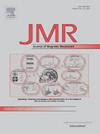A deep learning framework for multiplet splitting classification in 1H NMR
IF 1.9
3区 化学
Q3 BIOCHEMICAL RESEARCH METHODS
引用次数: 0
Abstract
One-dimensional 1H Nuclear Magnetic Resonance (NMR) stands out as the quickest and simplest among various NMR experimental setups. Unfortunately, it suffers from lengthy annotation times and does not always have a clear and unique interpretation. From NMR discovery, efforts have been dedicated to introducing an automated approach to streamline the characterization of chemical compounds while ensuring consistency of the results across the scientific community. Nonetheless, this remains an ongoing challenge that has garnered renewed interest with the emergence of deep learning techniques. Here, we present MuSe Net, a novel supervised probabilistic deep learning framework that can emulate the tasks performed by an expert spectroscopist in annotating one-dimensional NMR spectra generated by small molecules. Considering only the spectrum, MuSe Net detects and classifies multiplets with up to four coupling constants for their splitting phenotype, providing a segmentation of the spectral range. We exploit uncertainty quantification to produce a confidence score to both assess classification reliability and to detect signals that do not fit into any other phenotype class. The results of the evaluation against 48 experimental 1H NMR spectra of small molecules annotated by experts demonstrate that MuSe Net can deal with anomalies and unclear signals while correctly classifying multiplets and detecting overlapping peaks.

一种用于1H NMR多组分裂分类的深度学习框架
一维1H核磁共振(NMR)是各种核磁共振实验装置中最快、最简单的。不幸的是,它的注释时间很长,而且并不总是有清晰和独特的解释。从核磁共振发现开始,人们一直致力于引入一种自动化的方法来简化化合物的表征,同时确保整个科学界结果的一致性。尽管如此,这仍然是一个持续的挑战,随着深度学习技术的出现,它重新引起了人们的兴趣。在这里,我们提出了MuSe Net,这是一个新的监督概率深度学习框架,可以模拟光谱专家在注释由小分子生成的一维核磁共振光谱时所执行的任务。仅考虑光谱,MuSe Net检测和分类具有多达四个耦合常数的多胞胎,用于其分裂表型,提供光谱范围的分割。我们利用不确定性量化来产生一个置信度评分,以评估分类可靠性并检测不适合任何其他表型类别的信号。对48个经专家注释的小分子1H NMR实验谱的评价结果表明,MuSe Net在处理异常和不清晰信号的同时,能够正确分类多联体并检测重叠峰。
本文章由计算机程序翻译,如有差异,请以英文原文为准。
求助全文
约1分钟内获得全文
求助全文
来源期刊
CiteScore
3.80
自引率
13.60%
发文量
150
审稿时长
69 days
期刊介绍:
The Journal of Magnetic Resonance presents original technical and scientific papers in all aspects of magnetic resonance, including nuclear magnetic resonance spectroscopy (NMR) of solids and liquids, electron spin/paramagnetic resonance (EPR), in vivo magnetic resonance imaging (MRI) and spectroscopy (MRS), nuclear quadrupole resonance (NQR) and magnetic resonance phenomena at nearly zero fields or in combination with optics. The Journal''s main aims include deepening the physical principles underlying all these spectroscopies, publishing significant theoretical and experimental results leading to spectral and spatial progress in these areas, and opening new MR-based applications in chemistry, biology and medicine. The Journal also seeks descriptions of novel apparatuses, new experimental protocols, and new procedures of data analysis and interpretation - including computational and quantum-mechanical methods - capable of advancing MR spectroscopy and imaging.

 求助内容:
求助内容: 应助结果提醒方式:
应助结果提醒方式:


